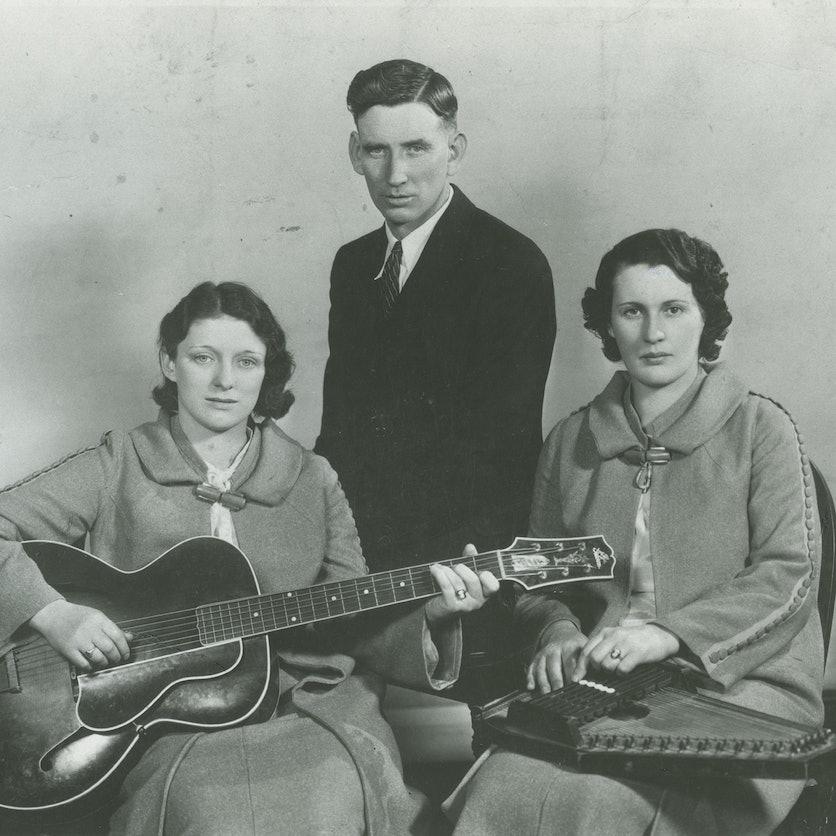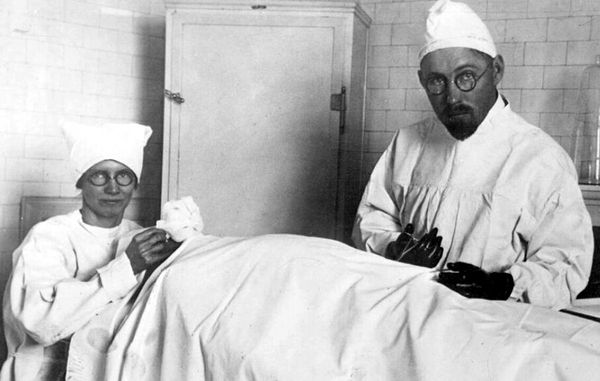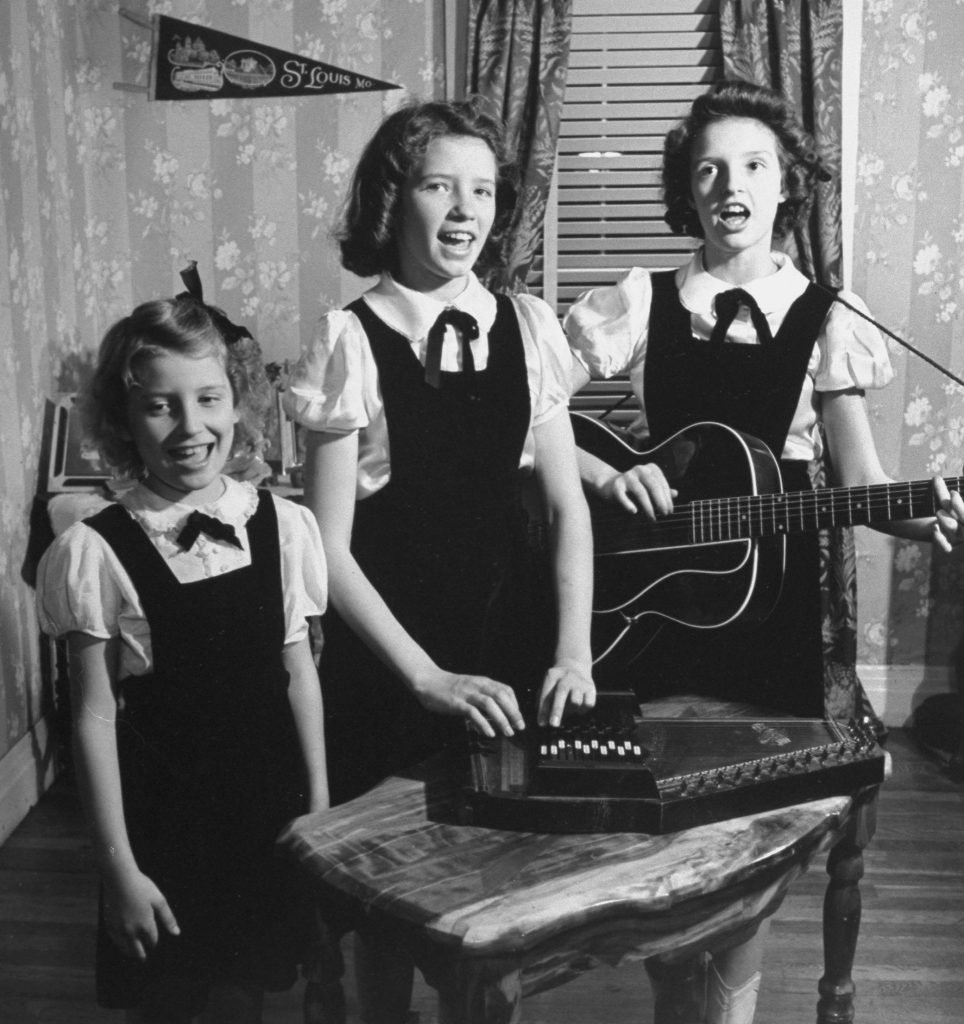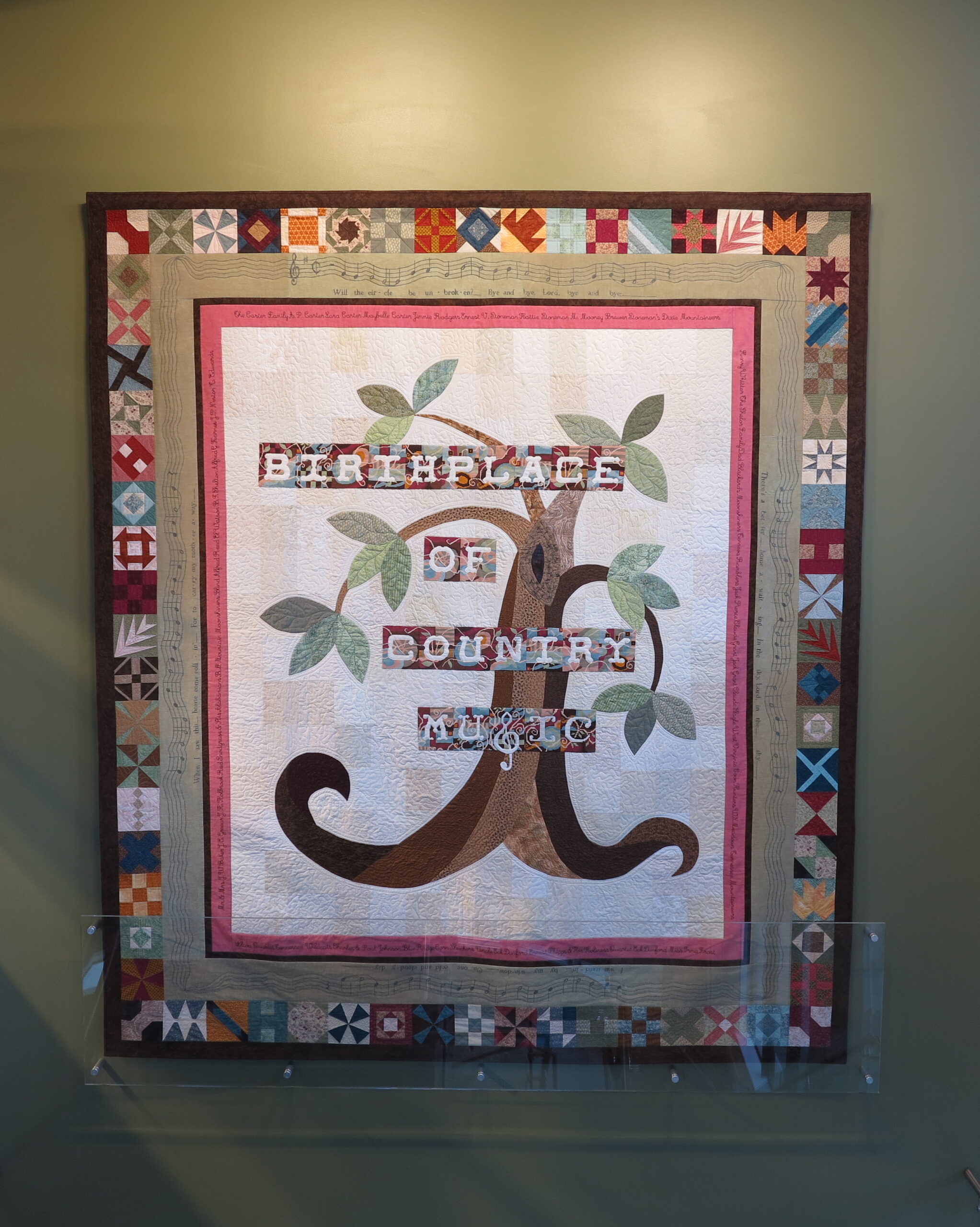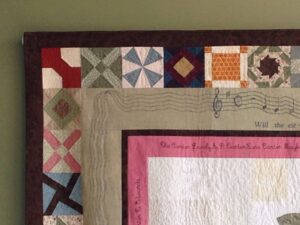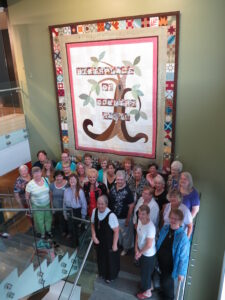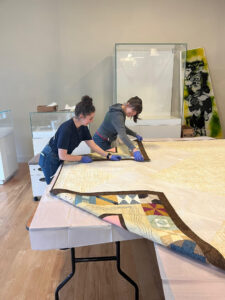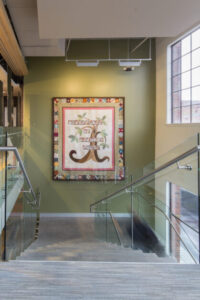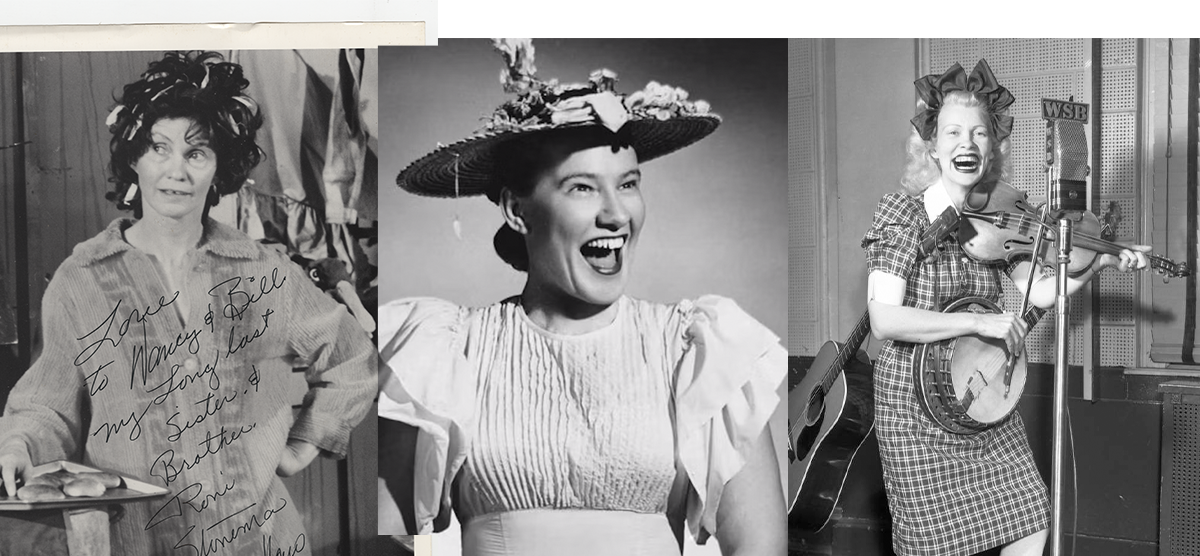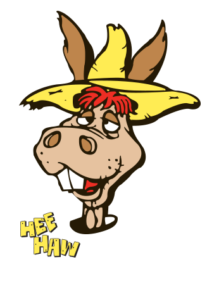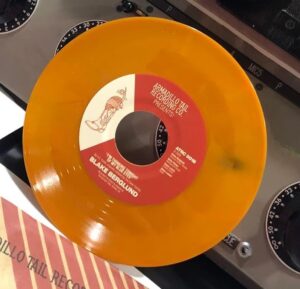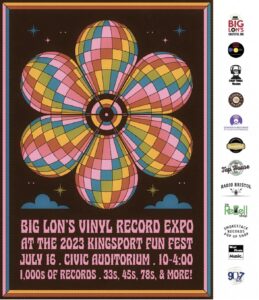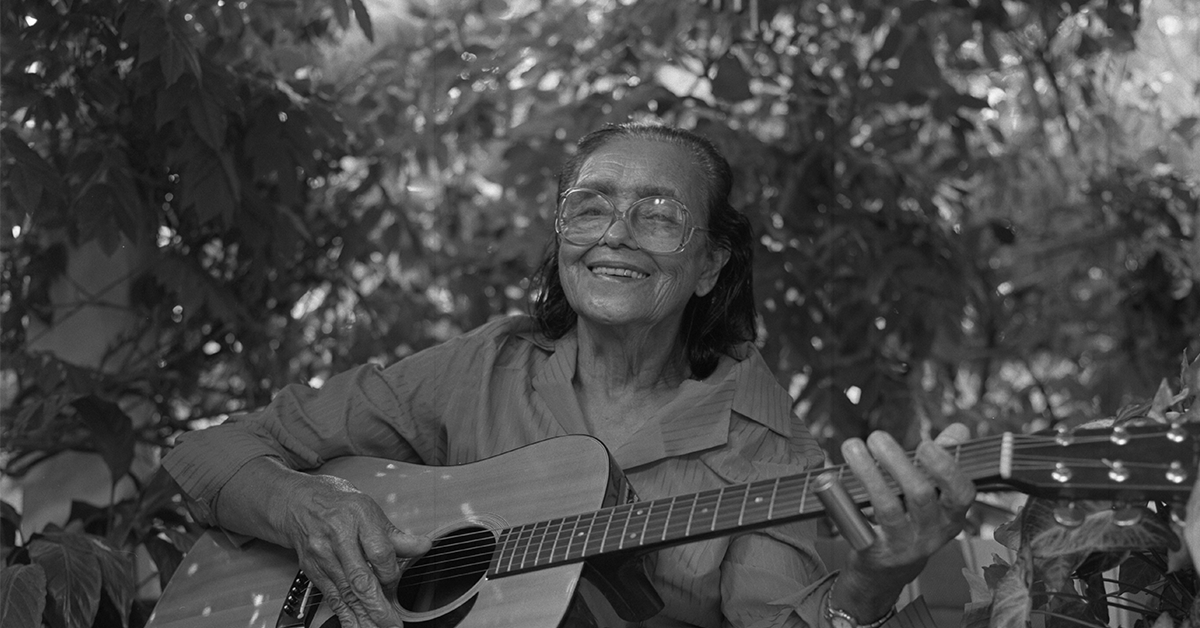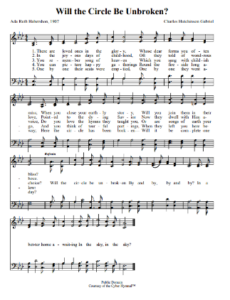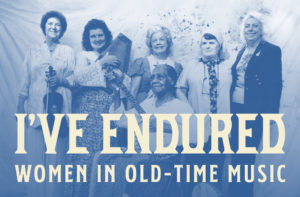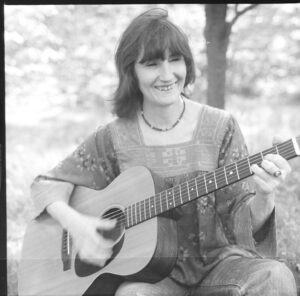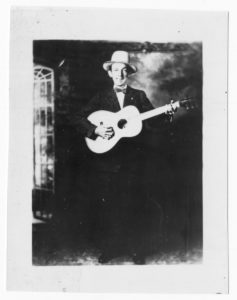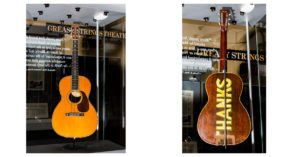Ed Hagen is a volunteer gallery assistant and guest blogger at the Birthplace of Country Music Museum. His recent blog posts include The Carter Family on the Border Radio and Will the Circle Be Unbroken.
The original Carter family became nationally famous after being recorded in the 1927 Bristol sessions. A. P. Carter sang bass and harmonies on many songs, and very occasionally played guitar, but his principal contribution acted as a songcatcher, working to find, rewrite, and rearrange traditional songs. His wife Sara Dougherty Carter was the lead singer, co-wrote many songs, and performed playing either a guitar or autoharp. Sara’s cousin Maybelle Addington Carter, (who was married to A. P.’s brother Eck) also sang, but is remembered today as a guitar virtuoso (more on that later).
Their record sales crashed with the Great Depression of the 1930s, but an opportunity to perform on a radio station on the Mexican border revived the fortunes of the group. In those days, Mexico and the United States had a dispute over AM radio signals, and some Mexican stations were given many times the wattage of U.S. stations. That meant that the Carters’ border radio shows were heard all over the country, reviving their popularity. The border radio station XERA had a massive 500 kilowatts, and could broadcast across 48 states and into Canada. Visit my previous blog post, The Carter Family on the Border Radio, to learn more about that story.

A new generation traveled with the Carters to the Mexican border. A.P. and Sara brought their two children, Janette and Joe. Maybelle and Eck brought their three daughters, Helen, June, and Anita. The children sang on the radio show (but not on records). The original group continued to perform for several years, but that ended when Sara moved to California in 1943.
Maybelle and her daughters continued to perform after the original Carter Family disbanded, performing as “the Carter Sisters and Maybelle Carter” on local radio stations in Richmond, Knoxville, and Springfield, Missouri. They became local celebrities in each city with big crowds as the stars of local “barn dance” radio shows, and they took their act to every town within range of the local radio signal. They were eventually signed by the Grand Ole Opry in Nashville in 1950.
With that extended introduction, and with today being National Daughter’s Day, let’s take a look at the radio transcriptions of the Carter Sisters. Years ago, radio shows were often recorded on “transcription discs,” special high-quality recordings that would be distributed to radio station affiliates. These disks had pauses in them so that the affiliated stations could insert their own commercials. The disks were never intended to be distributed to the public, but thousands of them have survived, later archived to tape and digital recordings by “old time radio” enthusiasts. These include recordings of a dozen Carter Sisters shows from 1949 and 1950 (just before they were signed by the Grand Ole Opry) that can be listened to today via YouTube.
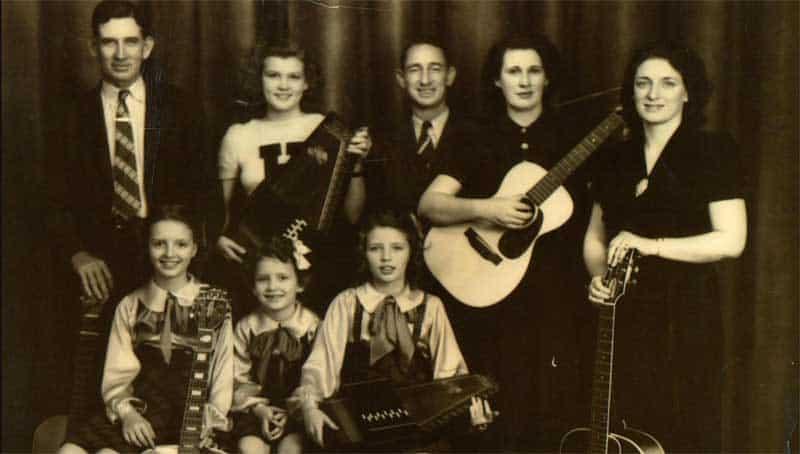
By the 1950’s, The Carter Sisters lineup included Helen, then age 22, playing the accordion and guitar; June, age 20, playing autoharp and ukulele; and Anita, age 16, playing upright bass. By this time June, a natural comedienne, introduced the songs and pitched sponsored products. Maybelle anchored the group playing her 1928 L5 guitar, which she bought with royalties from the 1927 Bristol Session recordings. What makes these recordings extraordinary is that the costar of the show was a then-unknown guitar player, Chet Atkins. Think about it; here we have recordings of perhaps the two most influential country guitar players of all time playing together just before they joined the Grand Ole Opry.
Why were Maybelle and Chet influential? Let’s start with Maybelle, the inventor of the “Carter scratch.” She would play the melody of songs such as “Wildwood Flower” and “Keep on the Sunny Side” on the bass strings of the guitar using a thumb pick, while rhythmically brushing the other strings with her fingernails or finger picks. Essentially, she played rhythm and lead guitar at the same time. This was revolutionary, because country guitar players didn’t see the guitar as a lead instrument before that.
Maybelle, an extraordinary musician, mastered other styles of playing. She can be seen on videos playing rhythm guitar up and down the neck like a jazz guitarist on some songs, and Mexican-inspired fills on others. She also played something the Carter family called the “blues.” Years later, in a wonderful documentary, Mother Maybelle’s Carter Scratch, Helen explains that Maybelle learned to play the “blues” around 1930 from Leslie Riddle, an African-American man in Kingsport. Riddle taught Maybelle guitar, and therefore played a direct impact on the early styles of country music, but due to race and discrimination was never able to reach the success the Carter Family achieved. This guitar style featured an alternating bass played with the thumb, with the melody played on the top strings (the reverse of the Carter scratch, where the melody was played on the bottom strings). Most people today call this style “Travis picking” because it was popularized by Merle Travis.
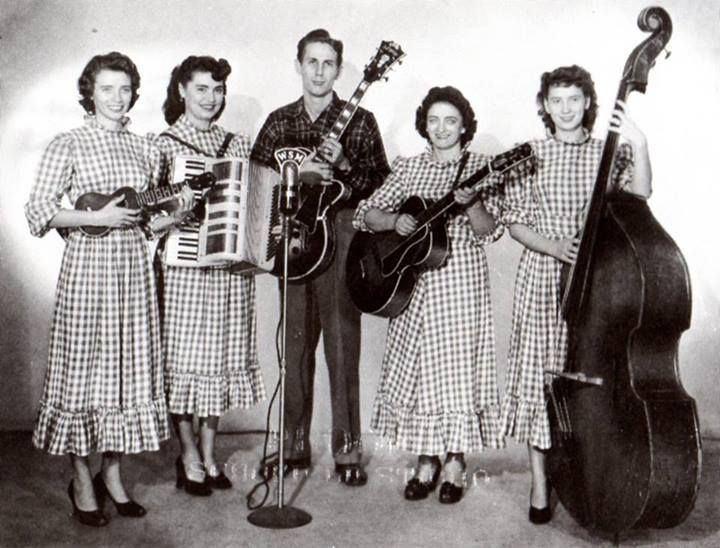
If you look closely at videos of Merle Travis playing this style, you’ll see that he used a thumb pick and just one finger for the melody. He got a miraculously full sound with this technique, but Chet Atkins, using all of his fingers, took Travis picking to another level. He went on to have a long and successful career, with best-selling instrumental hits like “Mr. Sandman” and “Yakety Axe”.
The shows starts with thirty seconds of their theme song, the “Columbus Stockade Blues,” just enough for one chorus and a sizzling Chet Atkins guitar break. They close each show with “In the Pines.” In between, different sisters are featured vocals, and Chet played instrumentals (check out, for example, Peach Pickin’ Time on show 17 and Humoresque on show 39). He also sings a bit, and plays the fiddle, something he’s not known for. Check out his version of Shortnin’ Bread in show 17.
Maybelle shows off her Carter Scratch on show 17, playing and singing the old Carter Family standard, “You Will Miss Me When I’m Gone”. We sure do, but these old radio shows bring them all back to life.


